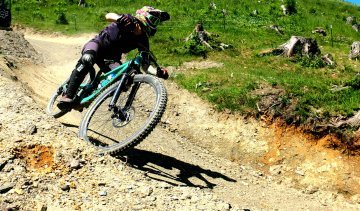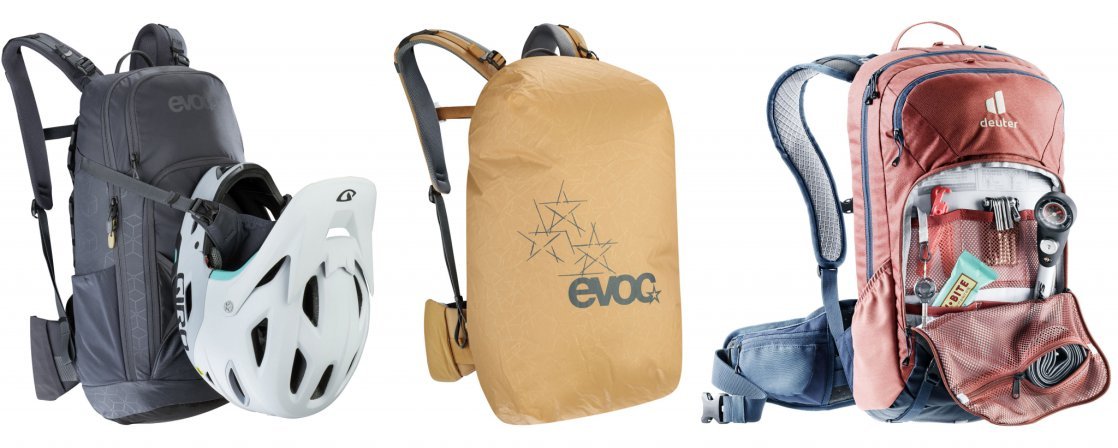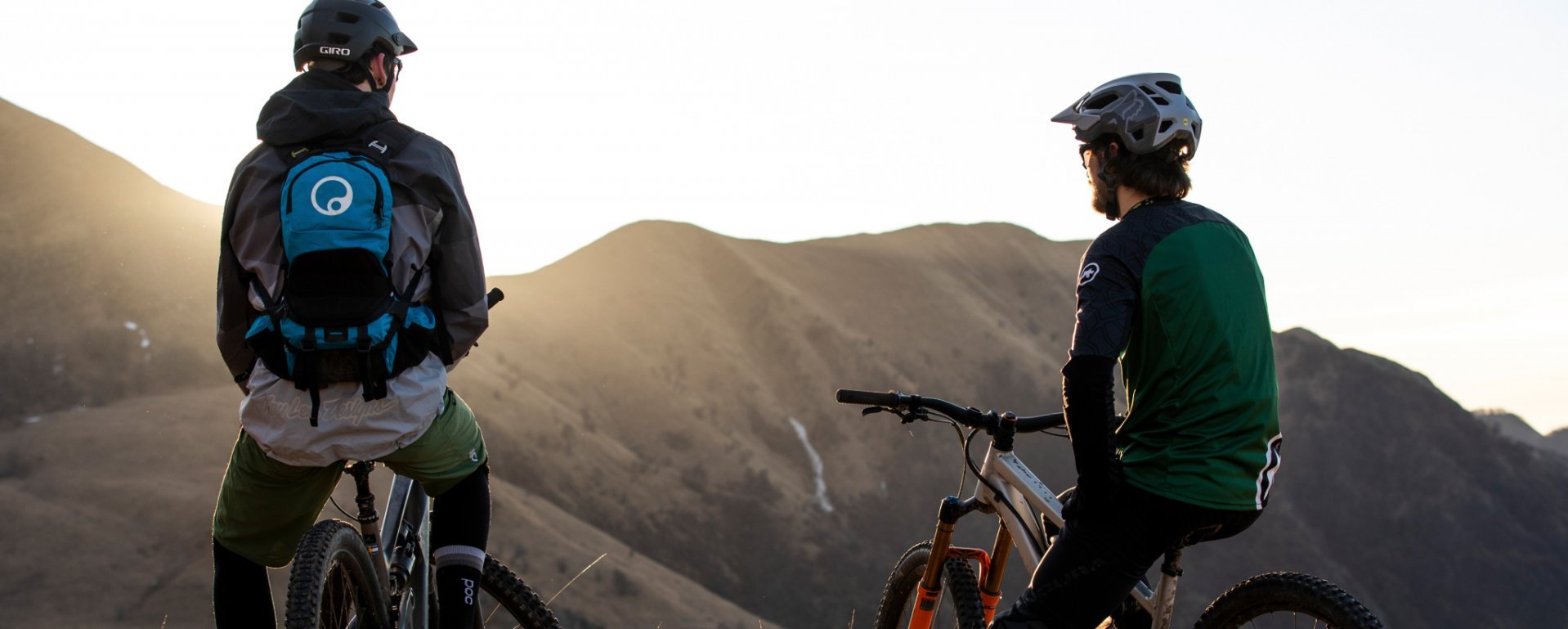
Review: POC VPD Back Protector – A real unisex ...
The POC VPD back protector provides excellent protection while being more minimalist and airy than other protector vests or shirts. Isa has put it to the t
Protector backpacks combine the functionality of a backpack with the safety of a back protector. We can help clue you in on the most important aspects.
Protector backpacks combine the functionality of a normal backpack with the safety of a back protector. Whether it’s extended tours across demanding terrain, freeriding excursions or long enduro races, wearing a protector backpack can significantly reduce the risk of injuries to your back or spine. While riding, it hardly feels different from carrying a regular backpack without protectors. We can help clue you in on the most important aspects, and what special features to look out for so that you end up with the right model.
It may seem like a conventional backpack with a jacket and some provisions would suffice for most people – so why would you need an extra protector? Certainly, falling on your back with a backpack would be more cushioning than without. However, two arguments can be made for wearing a real protector: it not only protects you from roots and sharp stones on the ground, but also from hard objects in the backpack itself. You usually don't just carry a jacket and provisions with you, but also tools, a camera, an insulated stainless steel bottle in winter, or maybe a spare battery for your E-MTB. A protector also cushions the impact these items would have on your back in the event of a fall. In addition, most protector backpacks are subject to testing: CE EN1621-2 for back protectors certifies a strict standard of protection. This applies equally to protector backpacks and their cousins, safety jackets and vests.
On most protector backpacks, the protector sits in a slot directly facing the back wall of the backpack – behind the hydration bladder, if you’re using one. It is usually a large plate that is fixed in place to prevent slippage. Different materials are used to make them, but what they all have in common is that they absorb shocks and distribute acute forces across a larger surface. Be aware, however: there are backpacks with so-called multi-impact protectors, and also those that remain permanently deformed after a fall and have to be replaced. There are advantages and disadvantages here: multi-impact protectors carry significantly more weight, while other protectors must be replaced after each fall. The more suitable system for you also depends on how often and how long you are on the road.
Some manufacturers are now moving towards permanently attaching the protective elements to the outside of the backpack. This way, protection is directly integrated into an ergonomic and ventilated carrying system, like Evoc does with Airshield Back Protectors .
To ensure that the protector is in the right place in the event of an accident, the backpack must not slip. To prevent this, manufacturers sometimes use particularly wide shoulder and hip belts. Rubber linings can provide additional grip. The part that rests on the back is most similar to normal backpacks with padding and ventilation channels.
Many protector backpacks are offered in different sizes. The right back length is even more important here than with a conventional backpack, because it influences not only the level of comfort, but also the correct fit of the protector. Check the manufacturer's guide and make sure you choose the right size when ordering. The protector should extend at minimum the length between your hips and shoulder blades. If the backpack is significantly shorter, you’re decreasing the level of safety offered by the protector.
Obviously, you can choose how much stuff to bring with you. There are extremely light and minimalist protector backpacks for quick laps or demanding enduro races, which are basically back protectors with some space for a hydration system, your keys and maybe an energy bar. On the other side, there are large backpacks that hold up to 30 litres of cargo. These types of backpacks allow you to easily embark on an extended tour or bikepacking trip. Between these two extremes, there's plenty of choice to suit all tastes. Consider carefully what supplies you regularly rely on, and maybe factor in some extra space for last-minute items.
Backpack construction is very similar across most models: in front of the protector, there is often a compartment for a hydration bladder, followed by the main compartment and other smaller compartments, depending on the size of the backpack. A layout with lots of small compartments can help you stay organised and find what you need faster.
If you value back protection, you'll also appreciate the safety afforded by a full-face helmet. Some protector backpacks have helmet holders that can accommodate a full-size full-face helmet, while others can accommodate a classic half-shell helmet. On warm summer days, when you want to take off knee protectors for climbs, it’s also handy if the backpack is equipped with straps to fasten them on the outside. You can also store a drink bottle in easily accessible pockets on the sides. Small pockets on the hip belt are good for things you want to have quickly at hand. However, be careful with hard objects! Multi-tools or keys could leave unpleasant marks on your hip in the event of a fall.
The minimalist:
The big pack:

Be sure to check out our product descriptions in the shop for the full scope of delivery on each item, so that there are no surprises! Some backpacks come with hydration systems and rain covers, while others count those as separate items. In some cases, the back protector insert must also be purchased separately.
